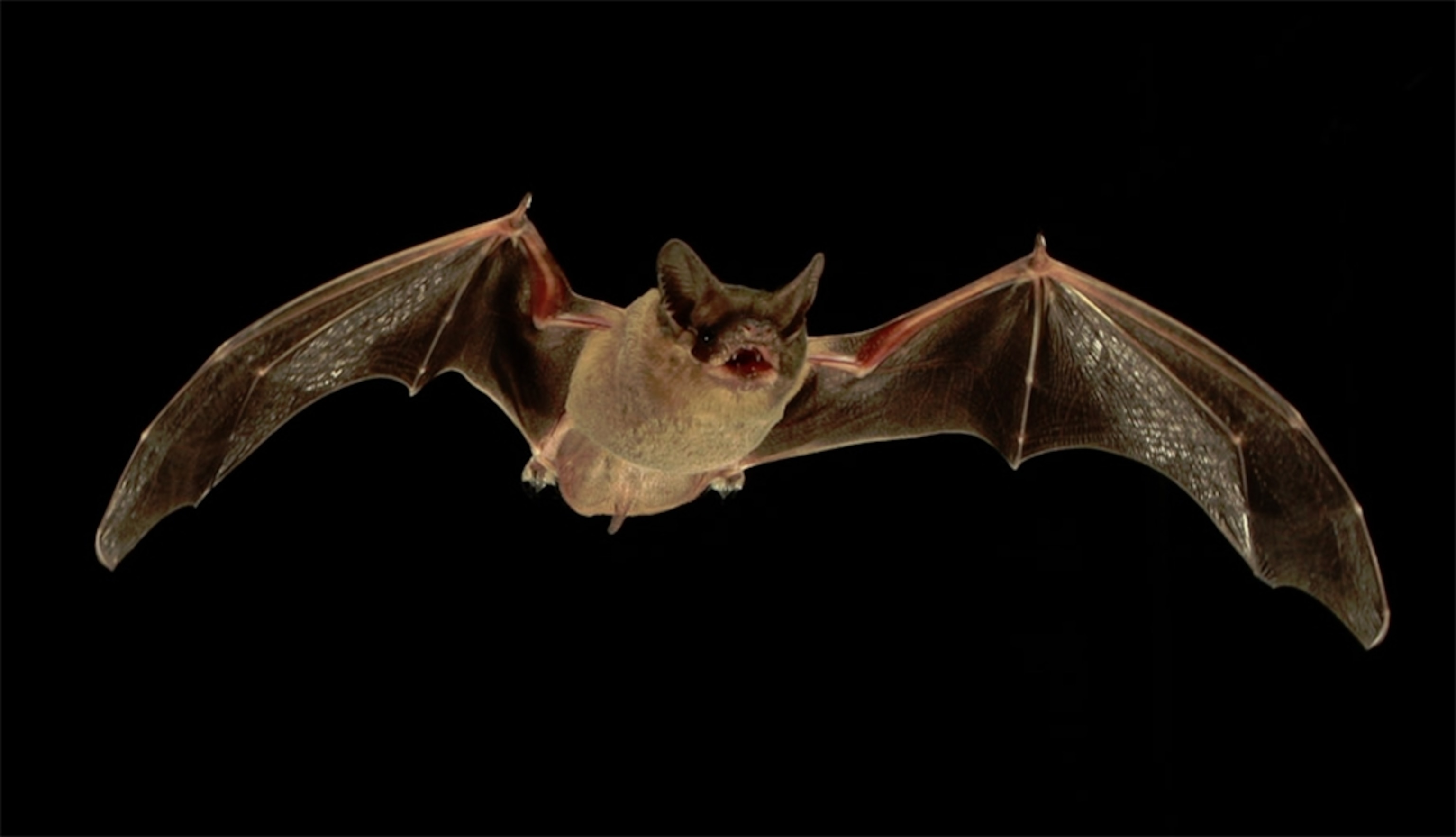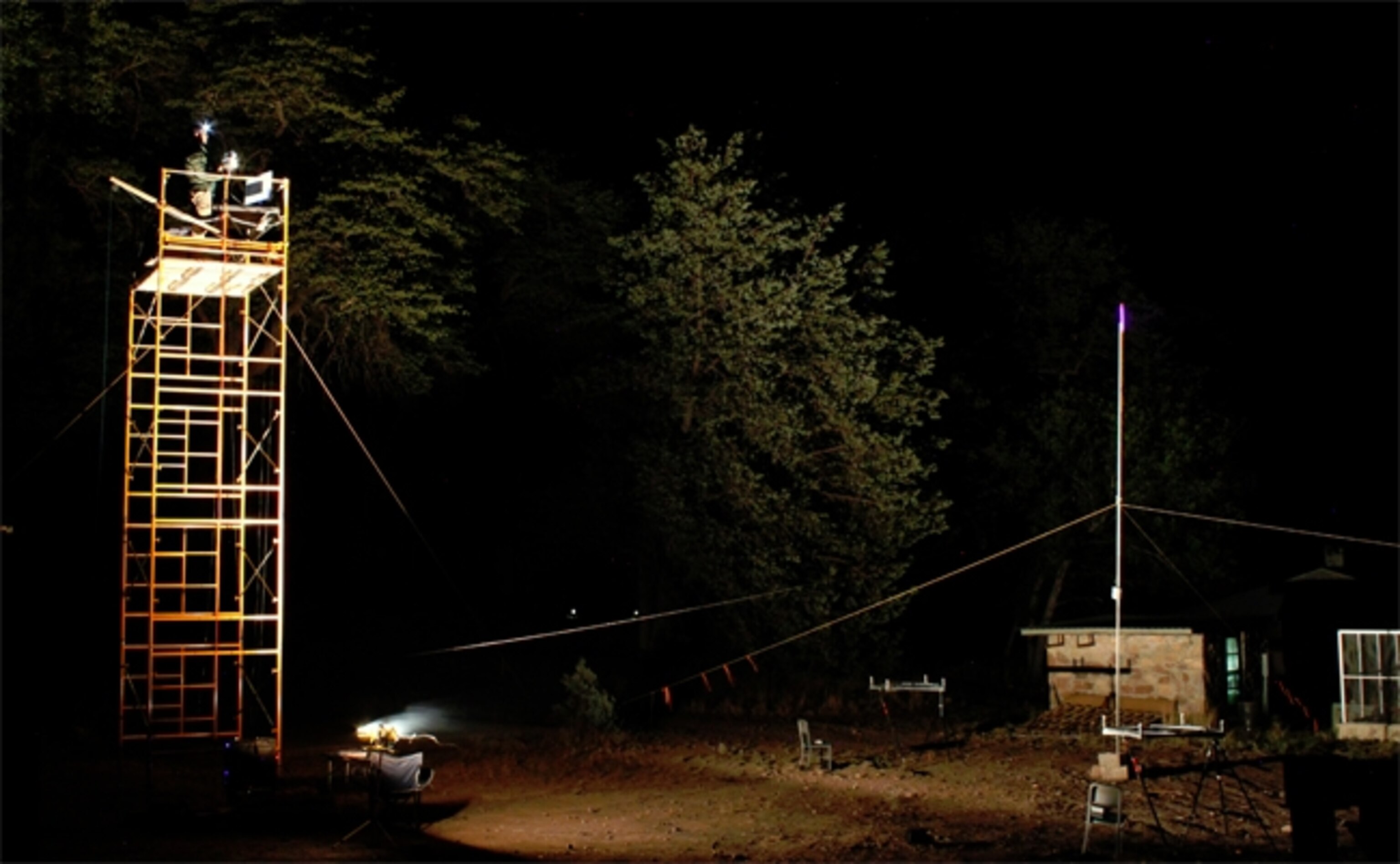
Bats Jam Each Other’s Sonar
A bat is hunting a moth. As it flies, it makes a series of high-pitched squeaks and listens for echoes rebounding off the insect. It gets closer, and now it makes a much faster series of calls—the feeding buzz—that help it to pinpoint exactly where the moth is. It swoops in for the kill… and fumbles. At the last moment, another set of sounds comes out of nowhere, confusing it and sending it off course.
It has just been jammed by another bat.
Bats live in a world of acoustic warfare. Their sonar, or echolocation, allows them to hunt in total darkness, but it also makes them vulnerable. In 2009, Aaron Corcoran and William Conner from Wake Forest University showed that tiger moths can unleash their own ultrasonic clicks to jam the sonar of approaching bats. The clicks overlap with the echoes of the bats’ own calls, muddying up their ability to gauge their distance from their prey. They know roughly where the moths are, but they can’t coordinate a precise strike. This defence is so effective that even if the moths are tethered to a stump, the bats still miss them on four out of five fly-bys.
Clicking moths aren’t a bat’s only problem. Many of them must contend with the sounds of their neighbours too. The Mexican free-tailed bat roosts in groups of up to 1.5 million individuals, and forms such big swarms that they sometimes show up on radar. This supremely social species uses at least 15 different calls to coordinate with its neighbours and defend its own patch of food. But Corcoran and Conner have discovered a new type of call, with a more antagonistic bent.
It’s called the sinFM. The bats rapidly raise and lower the pitch of their call more than a dozen times over, in bursts or “syllables” that last just a tenth of a second. The bats only ever did this when one of their peers was using its feeding buzz, and was about to snag an insect. And when these hunting bats heard the sinFM, they usually flubbed their strikes, missing their targets between 77 and 85 percent of the time.
It’s possible that the sinFM call could be a bat’s version of shouting, “GET AWAY, THAT’S MINE!” But that seems unlikely. While watching wild bats, Corcoran and Conner noticed that animals that are diverted by a sinFM call will double back to try and grab their prey again, rather than simply flying off. They missed their attacks not because they were deferring to a peer, but because their sonar had let them down.
Corcoran and Conner suspected that the bats use their sinFM calls to actively jam the sonar of their competitors. To test this hypothesis, they set up an experiment. They attached a thin line to a street light, and dangled a moth from it. Whenever a bat approached this bait, they played a recording of a sinFM call from a nearby speaker.

Normally, bats capture the dangling moths around 70 percent of the time, and neither a loud tone nor burst of noise put them off. But a sinFM call slashed their success rate to below 20 percent. Even though the moths were hanging in place, the bats couldn’t hit them.
And critically, the sinFM only worked if it overlapped with the bats’ feeding buzz. If the team played it just before an attack, it had no effect. Clearly, this call isn’t an off-putting shout. It really does seem to be a way for bats to jam each other. It isn’t meant to overwhelm a target’s senses like, say, a bright light shone into another person’s eyes. It’s more subtle than that. I imagine it to be more like saddling an opponent with a set of goggles that makes their world fuzzier.
If Corcoran and Conner are right, they’ve discovered the first example of a non-human animal that competes with a rival by disrupting its senses.
Reference: Corcoran & Conner. 2014. Bats jamming bats: Food competition through sonar interference. http://dx.doi.org/10.1126/science.1259512
